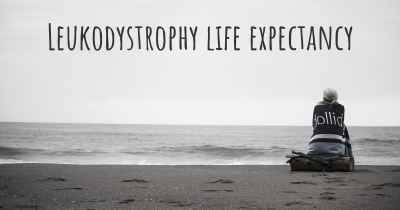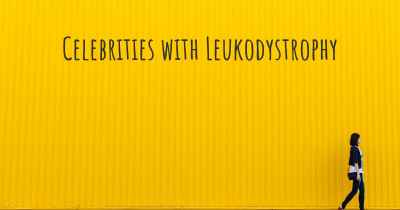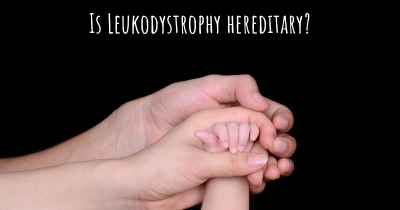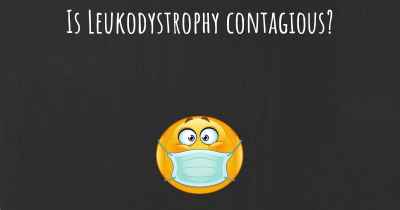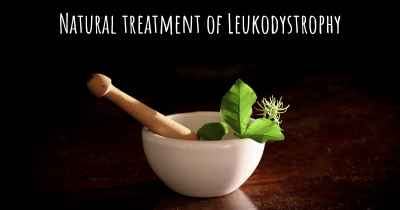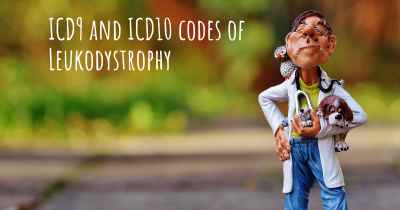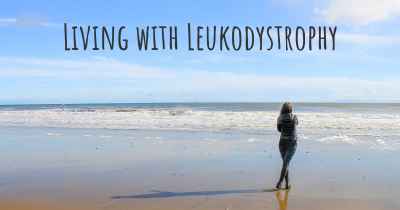What are the best treatments for Leukodystrophy?
See the best treatments for Leukodystrophy here
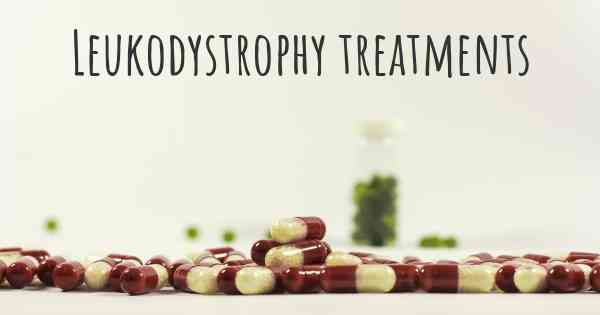
Treatments for Leukodystrophy
Leukodystrophy refers to a group of rare genetic disorders that affect the white matter of the brain, leading to the progressive degeneration of myelin, the protective covering of nerve fibers. As a result, individuals with leukodystrophy experience a range of neurological symptoms that can significantly impact their quality of life. While there is currently no cure for leukodystrophy, several treatment approaches can help manage symptoms, slow disease progression, and improve the overall well-being of affected individuals.
1. Symptomatic Treatment
Since leukodystrophy encompasses various subtypes, each with its own unique set of symptoms, treatment is primarily focused on managing specific symptoms and complications. Symptomatic treatment may involve:
- Physical therapy: Physical therapy can help maintain or improve mobility, muscle strength, and coordination. It may involve exercises, stretching, and assistive devices to enhance functional abilities.
- Occupational therapy: Occupational therapy aims to enhance daily living skills, such as self-care, fine motor skills, and adaptive techniques to promote independence and maximize quality of life.
- Speech therapy: Speech therapy can assist individuals with leukodystrophy in improving communication skills, swallowing difficulties, and addressing speech impairments.
- Pain management: Medications and therapies may be prescribed to alleviate pain and discomfort associated with leukodystrophy.
- Management of seizures: Anticonvulsant medications can help control seizures, which are common in some forms of leukodystrophy.
2. Supportive Care
Supportive care plays a crucial role in managing leukodystrophy and improving the overall well-being of affected individuals and their families. This may involve:
- Regular monitoring: Regular check-ups and monitoring of disease progression can help identify and address emerging symptoms or complications.
- Nutritional support: A balanced diet, often with the guidance of a nutritionist, can help maintain optimal nutrition and prevent complications related to swallowing difficulties or feeding problems.
- Assistive devices: The use of assistive devices, such as wheelchairs, braces, or communication aids, can enhance mobility, independence, and communication abilities.
- Palliative care: In advanced stages of leukodystrophy, palliative care focuses on providing comfort, pain management, and emotional support to both the affected individual and their family.
3. Experimental and Emerging Therapies
Researchers and medical professionals are actively exploring experimental and emerging therapies for leukodystrophy. While these treatments are still in the early stages of development, they hold promise for potential future interventions. Some of these therapies include:
- Gene therapy: Gene therapy aims to correct the underlying genetic defect responsible for leukodystrophy. It involves introducing healthy genes into the affected cells to restore normal function.
- Stem cell transplantation: Stem cell transplantation involves replacing damaged cells with healthy cells derived from stem cells. This approach holds potential for regenerating myelin and improving neurological function.
- Enzyme replacement therapy: Enzyme replacement therapy is being explored for specific types of leukodystrophy caused by enzyme deficiencies. It involves administering artificial enzymes to compensate for the missing or dysfunctional ones.
- Pharmacological interventions: Researchers are investigating various drugs and compounds that may help slow disease progression, reduce inflammation, or promote myelin repair.
It is important to note that while these experimental therapies show promise, they are not yet widely available or approved for routine clinical use. Individuals with leukodystrophy should consult with their healthcare team to stay informed about the latest research and potential treatment options.
In conclusion, while there is currently no cure for leukodystrophy, symptomatic treatment, supportive care, and ongoing research into experimental therapies offer hope for managing symptoms, slowing disease progression, and improving the quality of life for individuals with leukodystrophy.
Posted Aug 6, 2017 by cjackson1982 1500
Posted Aug 7, 2017 by Todd 2340
Posted Sep 24, 2017 by Leonor 400
